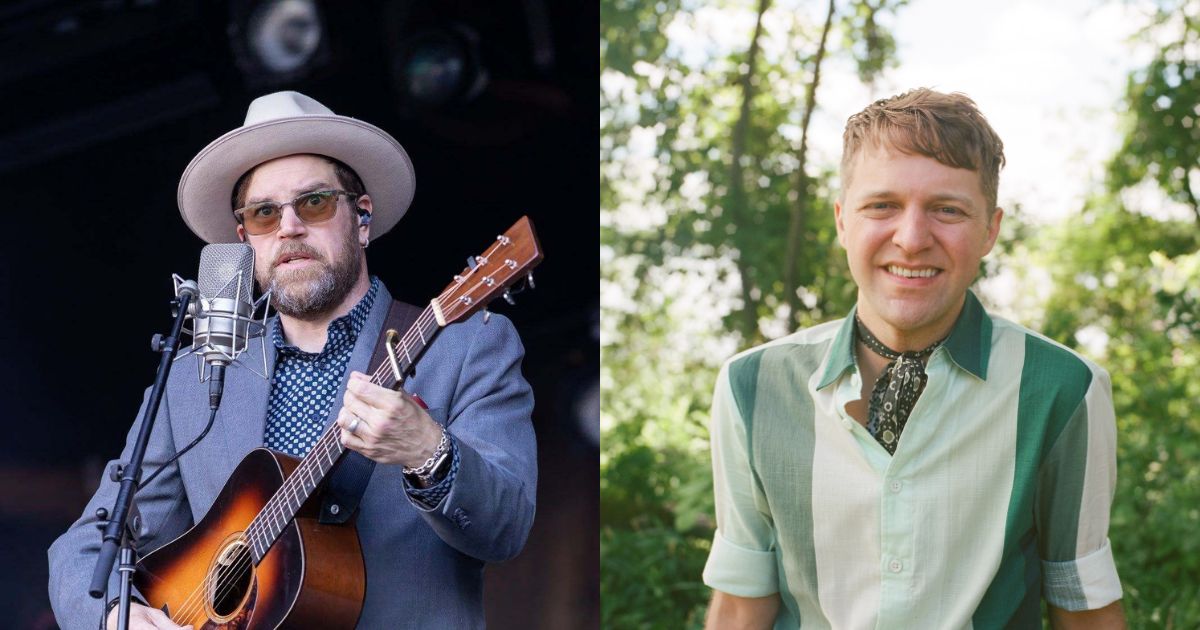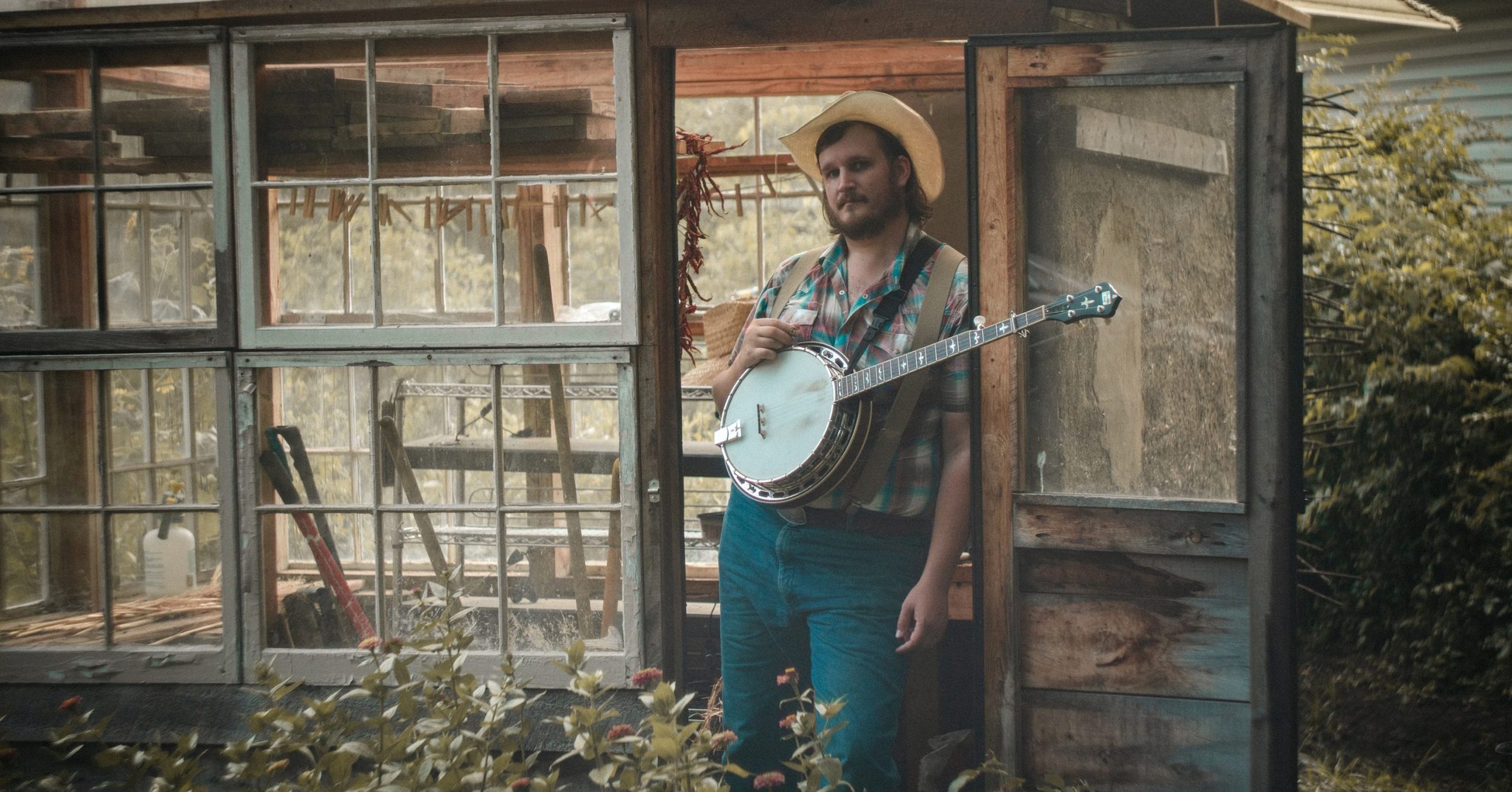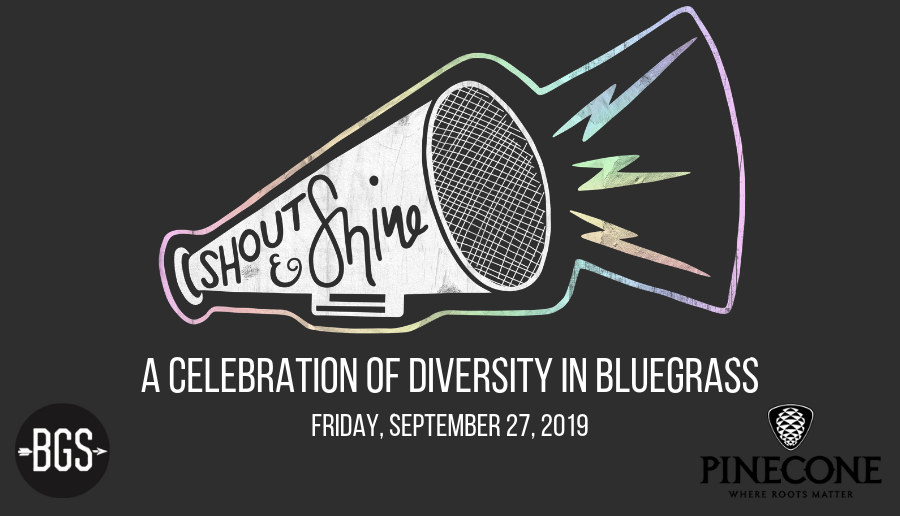Here’s a flock of brand new songs and videos you gotta hear! This week, our premiere round-up includes Americana, fiddle tunes, percussive dance, good country, string band excellence, and more.
Don’t miss new tracks like “Second Best,” from Americana singer-songwriter and Steep Canyon Rangers vocalist Aaron Burdett, and “China Camp,” a fiddle tune written by Paul Shelasky and performed by Amy Kassir with Jake Eddy and more. Also, Wisconsin’s own Them Coulee Boys drop “I Am Not Sad,” a song that grapples with mental health from their upcoming 2025 album, No Fun In The Chrysalis.
We’ve got some superlative videos this week, as well! Percussive dancer and folk musician Nic Gareiss dances us through a gorgeous, queer rendition of a Gillian Welch song, “Back Turn and Swing,” and alt-folk trio Palmyra have brought a live field recording of “Fried,” a song from their brand new EP, Surprise #1. Meanwhile, Eilen Jewell pays tribute to Loretta Lynn and spotlights the progress and regression of the last 50 years of reproductive rights activism with a cover of “The Pill.”
To wrap us up, we don’t want you to miss the latest AEA Session, premiered in partnership with AEA Ribbon Mics on BGS earlier this week. This edition of the series features Brit Taylor & Adam Chaffins, performing live at Americanafest last month.
It’s all right here on BGS and, certainly, You Gotta Hear This!
Aaron Burdett, “Second Best”
Artist: Aaron Burdett
Hometown: Saluda, North Carolina
Song: “Second Best”
Release Date: October 25, 2024
Label: Organic Records
In Their Words: “You might say ‘Second Best’ was a song 30 years in the making. I’ve had this line from an old David Wilcox song rattling around in my head since the ’90s. It always struck me as a phrase that could be interpreted in many different ways. So I eventually started playing with that idea and bouncing it off various scenes and situations. A year or so ago I landed on the one (or two) that ended up in the recording, along with the original Wilcox line that inspired the chorus. Some songs arrive quickly, and some arrive much more slowly!” – Aaron Burdett
Track Credits:
Aaron Burdett – Vocals, acoustic guitar
Kristin Scott Benson – Banjo
Carley Arrowood – Fiddle
Tristan Scroggins – Mandolin
Jon Weisberger – Upright bass
Wendy Hickman – Harmony vocals
Travis Book – Harmony vocals
Nic Gareiss, “Back Turn and Swing”
Artist: Nic Gareiss
Hometown: Lansing, Michigan
Song: “Back Turn and Swing”
Release Date: October 25, 2024
In Their Words: “When I heard Gillian Welch’s song ‘Back Turn and Swing,’ I was immediately drawn to the way it brings the listener into the scene of a dance event: musicians tuning up, someone cooking potluck food to pass around, the excitement in the air, folks eager to get up onto the floor. The lyrics evoke the feeling of the square and contra dances I grew up attending in the rural Midwest. At the same time, as a non-binary queer person, I feel bodily unease around how the song sets up the dualistic gender of the attendees.
“Many folk dances these days have adopted expansive and inclusive dance calls, like using ‘larks and robins,’ ‘lefts and rights,’ etc. (shoutout to Michigan’s Looking Glass and Ten Pound Fiddle contra dances, Detroit’s queer square dance, Asheville’s Old Farmer’s Ball, and Brooklyn’s Gayli). Yet I’m still compelled to check beforehand that the caller – the authoritarian voice at the front of the hall telling people what to do with their bodies – is onboard with same-sex couples dancing together or trans and genderqueer people expanding these roles. This past summer a partner and I were at a dance when someone in their 20s asked us mid-set, ‘Who is the man?’ This reminded me that there’s still work to do; inclusivity still requires advocacy and allyship to help all feel welcome in the dynamism of the dance floor.
“Speaking of dynamic, as a child I saw John Hartford and was both astonished and inspired by the soundscapes he could create; dance, music, and song all embodied in one person. I aspire towards that dance-as-music in this video, where I added a few lyrics to the last verse.” – Nic Gareiss
Video Credits: Filmed by Blake Hannahson. Audio mixed by Jaron Freeman-Fox.
Eilen Jewell, “The Pill”
Artist: Eilen Jewell
Hometown: Boise, Idaho
Song: “The Pill”
Album: Butcher Holler: A Tribute To Loretta Lynn
Release Date: October 22, 2024 (single); November 15, 2024 (album)
Label: Signature Sounds
In Their Words: “The amazing thing about ‘The Pill’ is that it still feels edgy today, nearly 50 years after its original release. Loretta infused it with so much sassy defiance that, even now, when I sing it live and reach the phrase ‘now I’ve got the pill,’ some fans pump their fists while others clutch their pearls. It still strikes a nerve, a testament both to how effective this song is and how little progress we’ve made in this country in terms of reproductive rights.
“Loretta still holds the prestigious record for the singer of more banned radio hits than all other male country artists in the twentieth century combined. And ‘The Pill’ was the most banned of all of her songs, which is saying a lot. By recording and performing it live, I hope to do my part to spread the word about the importance of public access to family planning as an integral part of a woman’s right to the pursuit of happiness. It’s hard to believe this fight is still going on, but until it’s over I’ll be here for it.” – Eilen Jewell
A note from the artist: A percentage of sales from “The Pill” will be donated to Planned Parenthood.
Video Credits: Bill Hurley at The Fallout Shelter in Norwood, Massachusetts
Amy Kassir, “China Camp”
Artist: Amy Kassir
Hometown: Durham, North Carolina. Currently lives in San Rafael, California.
Song: “China Camp”
Album: Bread and Butter
Release Date: October 25, 2024
In Their Words: “‘China Camp’ is a great tune by the legendary California fiddler Paul Shelasky. I first heard it on the 1983 Good Ol’ Persons record, I Can’t Stand to Ramble, and I’ve been obsessed ever since. While so many tunes on my album are ‘bread and butter’ fiddle tunes I grew up playing in North Carolina, I wanted to include a tune that represents the rich musical legacy of California, which has been my home for the last 10 years. I’m so thankful Paul gave me his blessing to record this tune.
“This recording features Jake Eddy on guitar and banjo, Korey Kassir on mandolin, and Carter Eddy on bass. It’s such an exciting tune to play, and we had a lot of fun bringing it to life.” – Amy Kassir
Palmyra, “Fried”
Artist: Palmyra
Hometown: Richmond, Virginia
Song: “Fried”
Album: Surprise #1 (EP)
Release Date: October 24, 2024
Label: Oh Boy Records
In Their Words: “As we have ventured into playing bigger stages and festivals, our sound has expanded significantly. While the core of Palmyra remains the three of us, we’ve been experimenting with a larger four-piece sound, as heard on the recorded version of ‘Fried’ on our new EP, Surprise #1, with Oh Boy Records. ‘Fried’ is our most ambitious acoustic experiment, starting with a drum set and a hypnotic repetitive guitar lick. Recording the song acoustically with one microphone in a field was a fun way for us to find the core of the tune. It was a challenge to see how many elements we could strip away and still keep the groove. We like to call ‘Fried’ our ‘jam band’ song, and we hope even this field recording gets you on your feet.” – Palmyra
Track Credits:
Written by Sasha Landon, Mānoa Lewis Bell, and Teddy Chipouras.
Sasha Landon – Mandocello, voice
Teddy Chipouras – Guitar, voice
Mānoa Bell – Upright bass, voice
Jake Cochran – Drums
Video Credit: Elliott Crotteau
Them Coulee Boys, “I Am Not Sad”
Artist: Them Coulee Boys
Hometown: Eau Claire, Wisconsin
Song: “I Am Not Sad”
Album: No Fun In The Chrysalis
Release Date: October 29, 2024 (single); February 28, 2025 (album)
Label: Some Fun Records
In Their Words: “‘I Am Not Sad‘ is the last song on the record and captures the theme of accepting change this record focuses on. I’ve struggled with my mental health my whole life, dealing with depression, anxiety, and issues with self worth. I’ve embraced those issues in my songwriting, hoping to shine a light on things that we all go through from time to time. We have plenty of songs that talk about these issues, but this one is the first that accepts them.
“The song is built around the phrase ‘I am not sad anymore, at least not today.’ It’s a celebration of the happiness in the moment, while acknowledging that there’s times when it’s harder. It’s about being thankful for the good times, and letting them stack up on one another for when the bad times come. It’s a declaration, a moment of catharsis, while knowing that it won’t always be like that.
“Sonically it starts sparsely, with elements of the band being added with each verse, like confidence growing in one’s self as you begin to believe. It’s self-assured, with strummed mandolin and piano a backdrop for growth. When the bridge lyrically introduces the idea that these positive feelings might not last, the musical interlude represents the choice to embrace that realization. An ethereal, almost dream-like backdrop sets up the catharsis of the last verse. When the last verse hits, it invites all the good feelings back for a triumphant jam. It’s loud and snarls in the face of the hard times. It’s meant to soar and it does.” – Soren Staff
AEA Sessions: Brit Taylor & Adam Chaffins, Live at AmericanaFest 2024
Artist: Brit Taylor & Adam Chaffins
Hometown: Hindman, Kentucky (Brit), Louisa, Kentucky (Adam); now, both call Nashville home.
Songs: “Little Bit at a Time,” “Holding On Holding Out,” “Trailer Trash,” “The Best We Can Do Is Love,” and “Saint Anthony”
In Their Words: “It was fun playing and talking about new songs on some incredible sounding AEA gear with Brit Taylor on the Bell tone sessions!” – Adam Chaffins
“Brit and Adam’s songs are personal, yet universal. They are warm in person and it’s clear they spend a lot of time together singing, playing, and writing. Their vocals weave and intertwine so effortlessly.” – Julie Tan, AEA Ribbon Mics
Photo Credit: Aaron Burdett by Mike Duncan; Nic Gareiss by Blake Hannahson.



